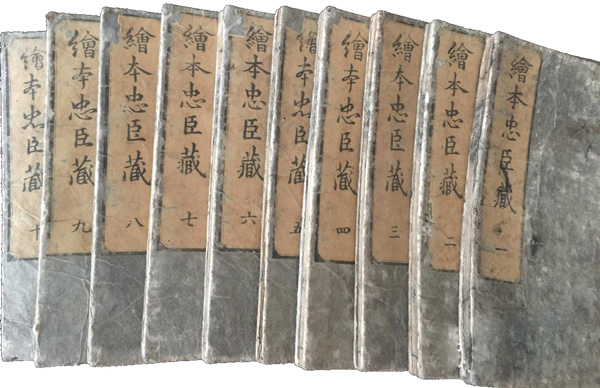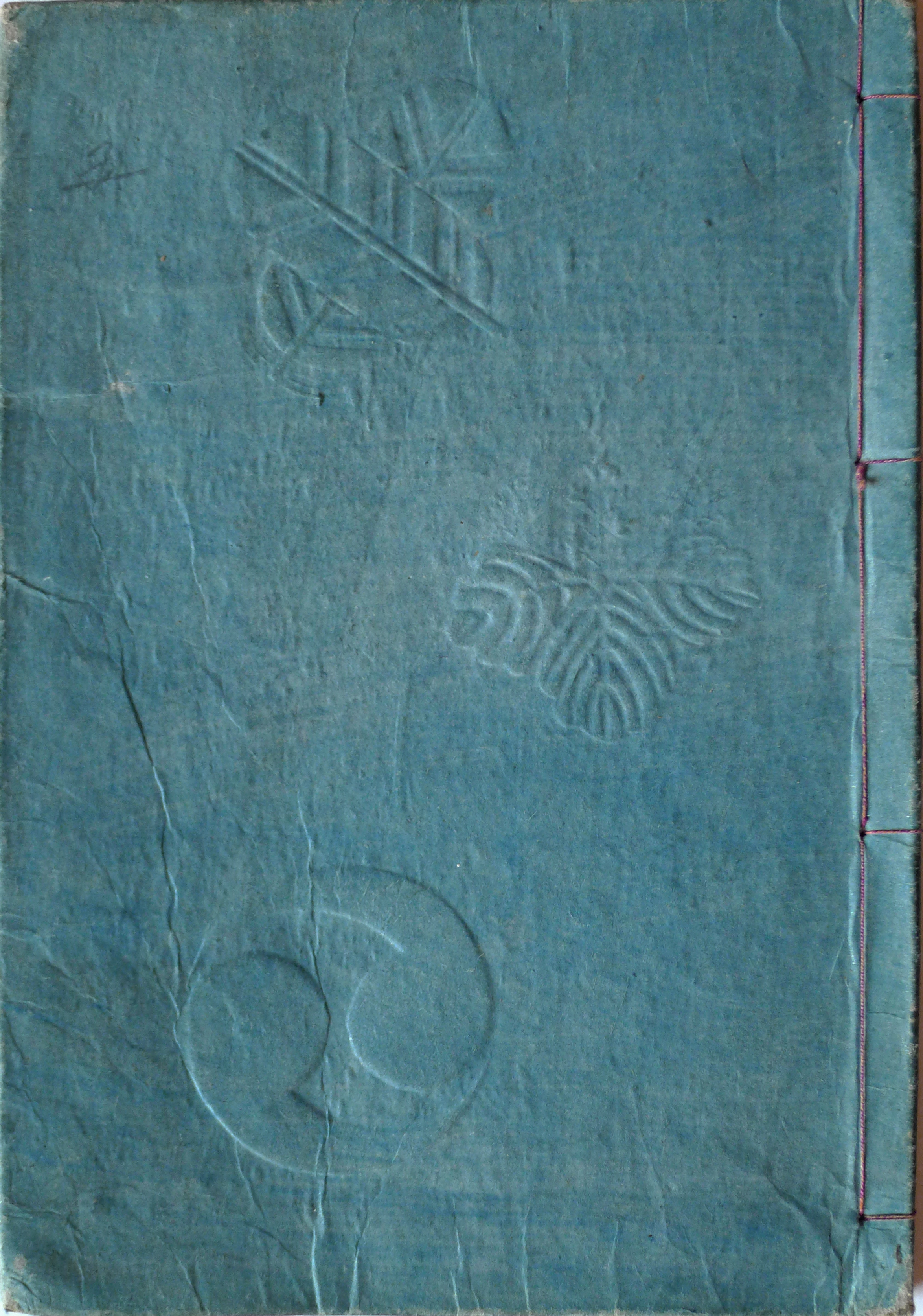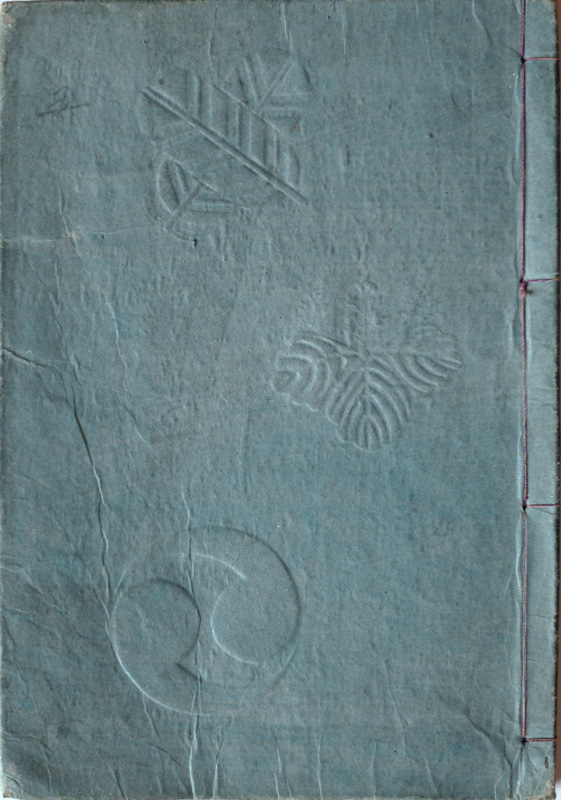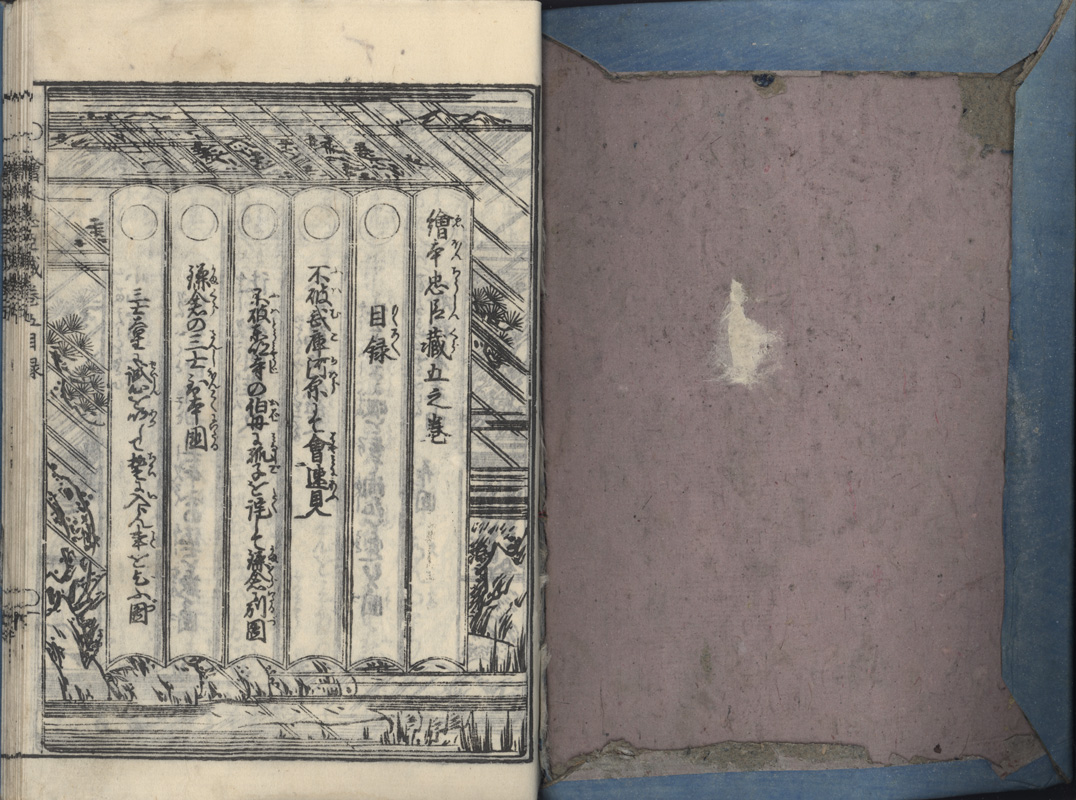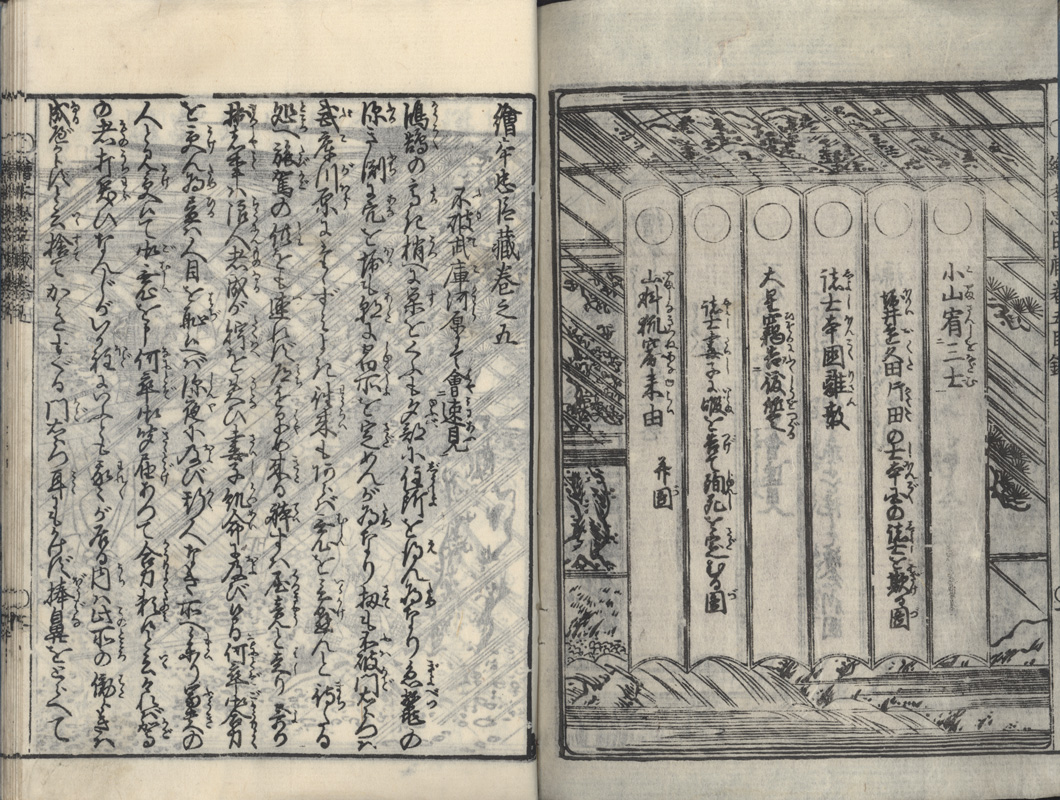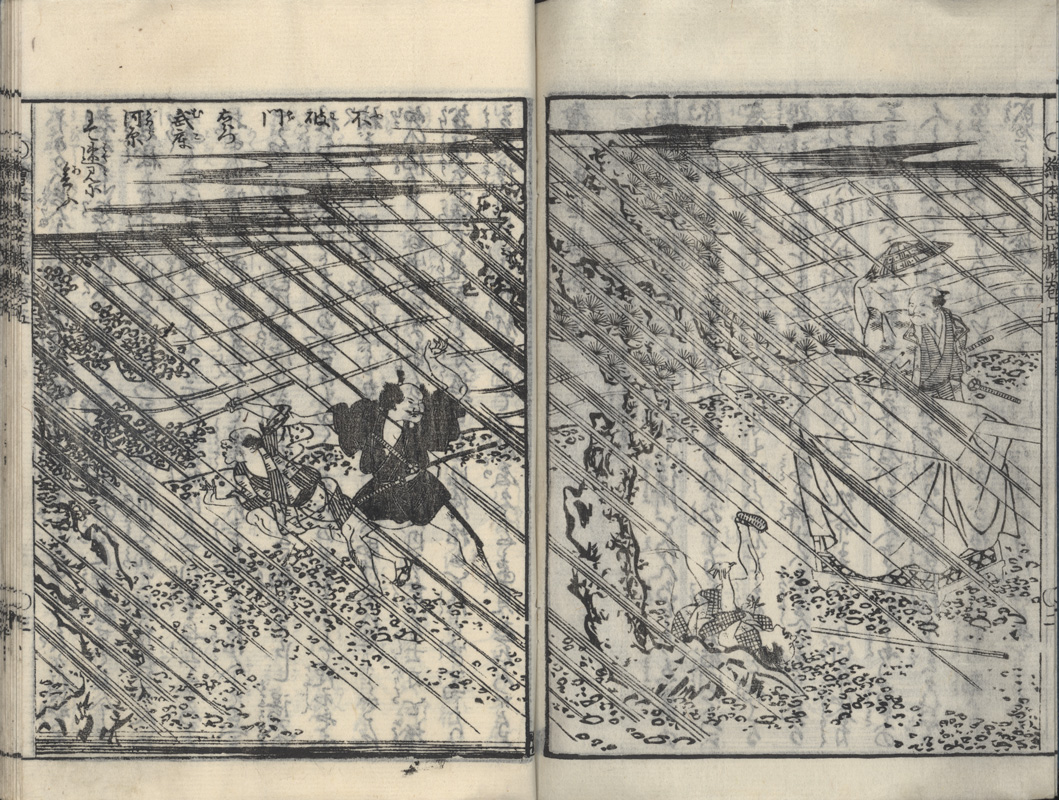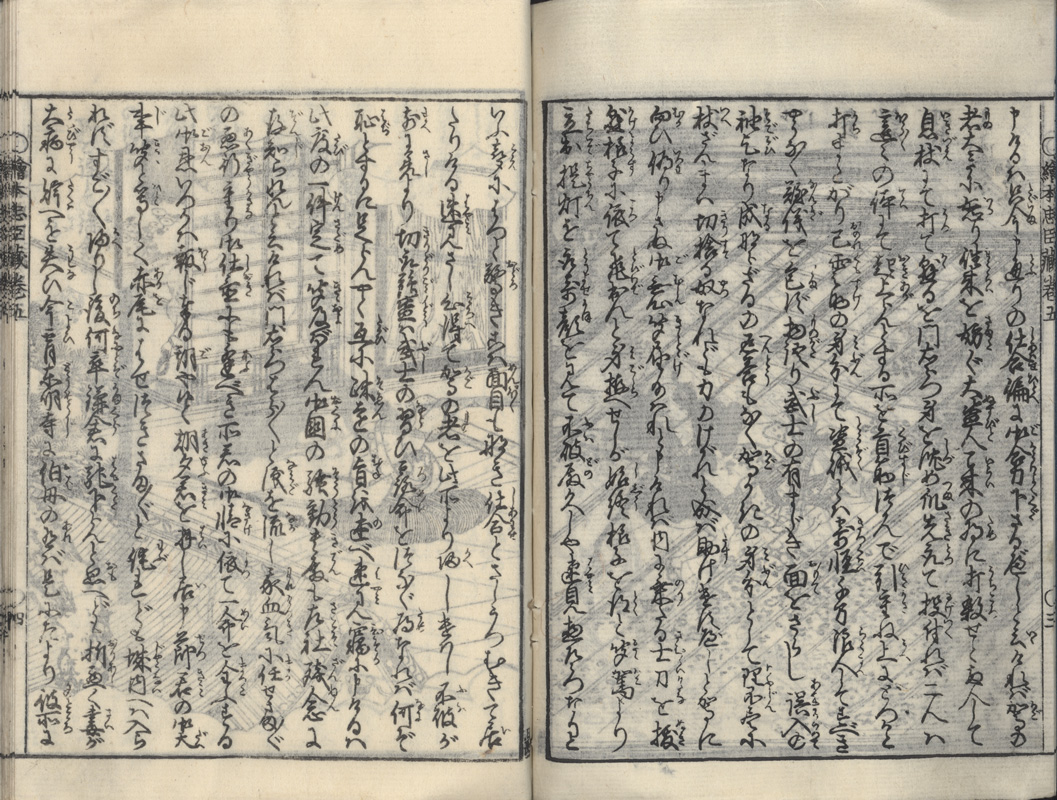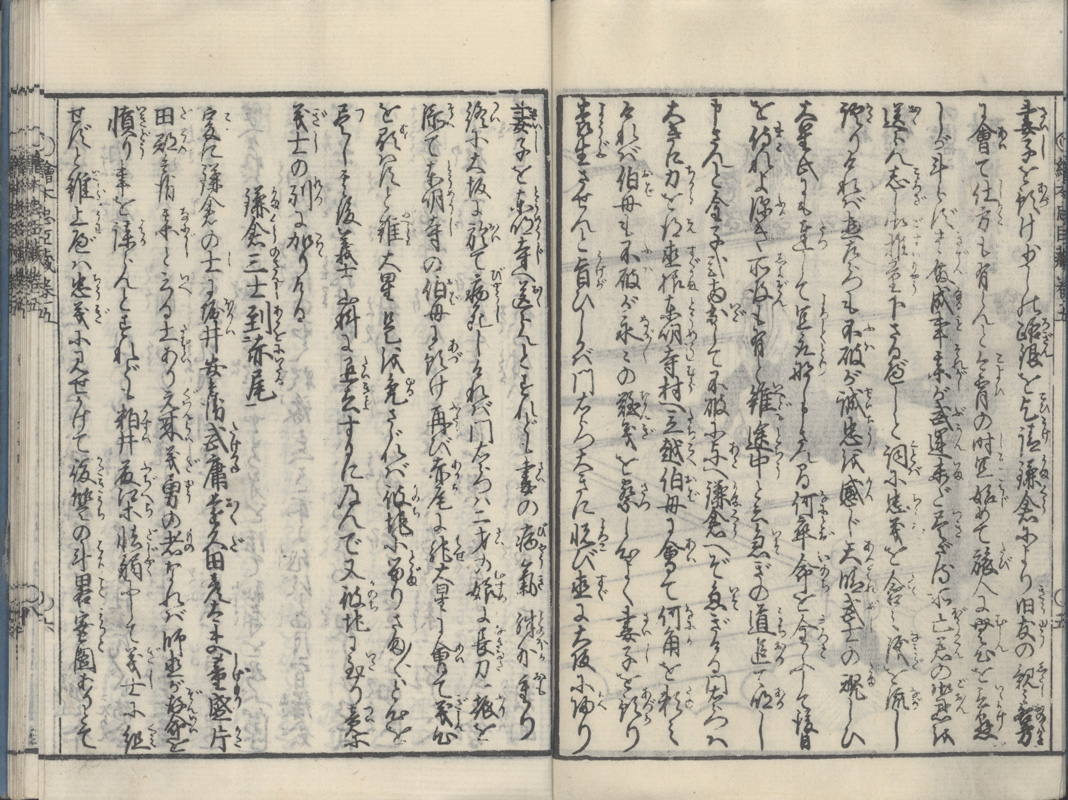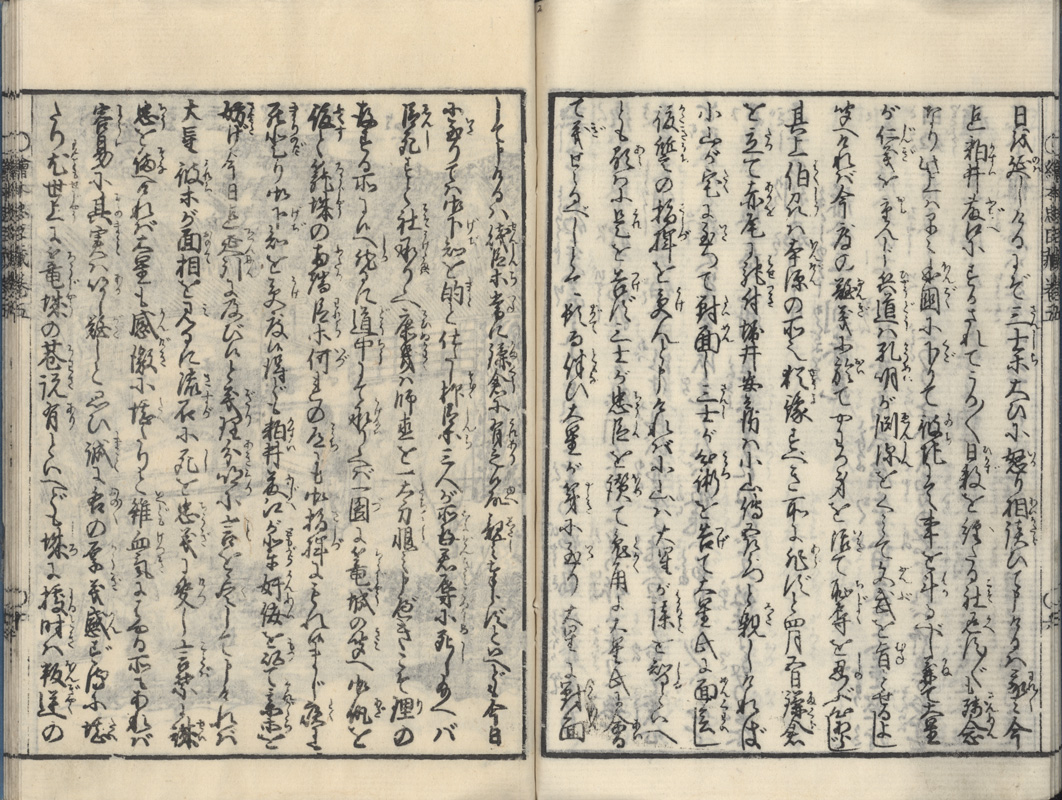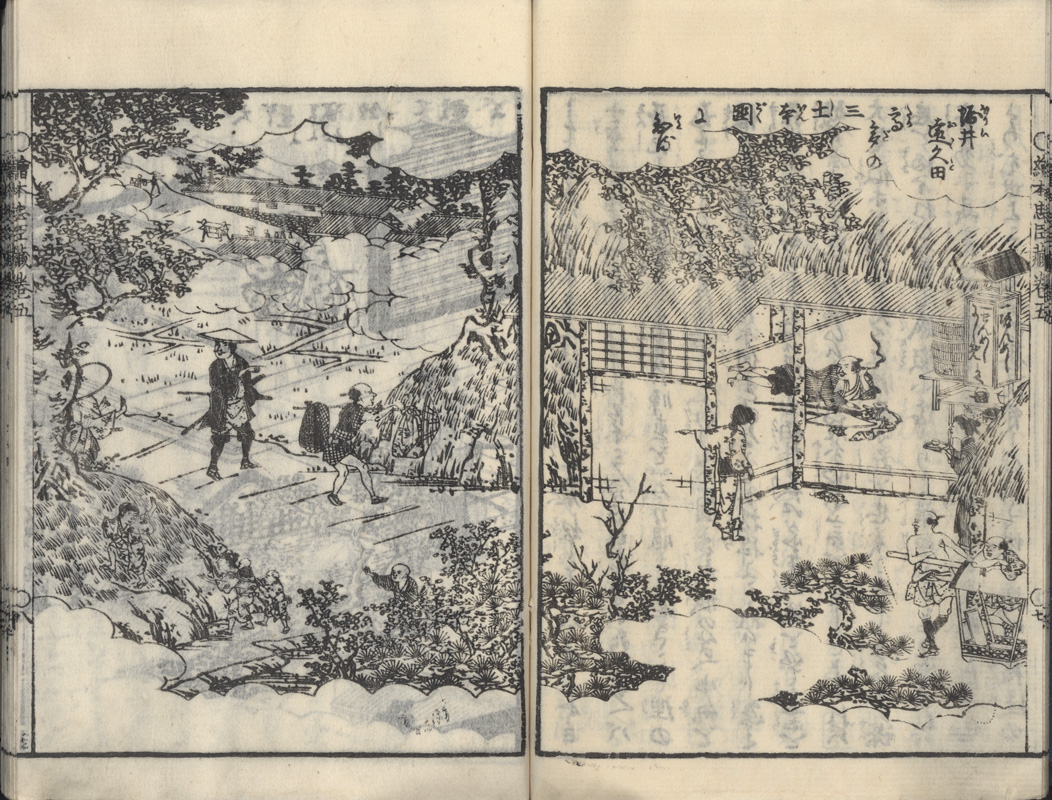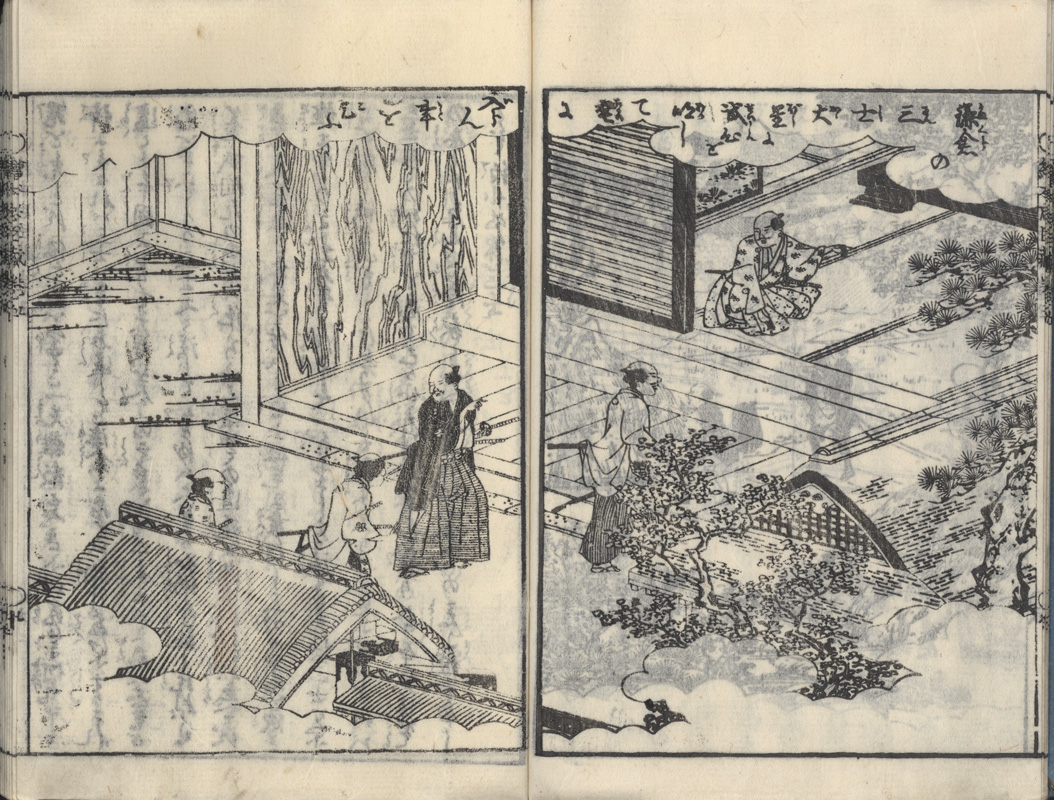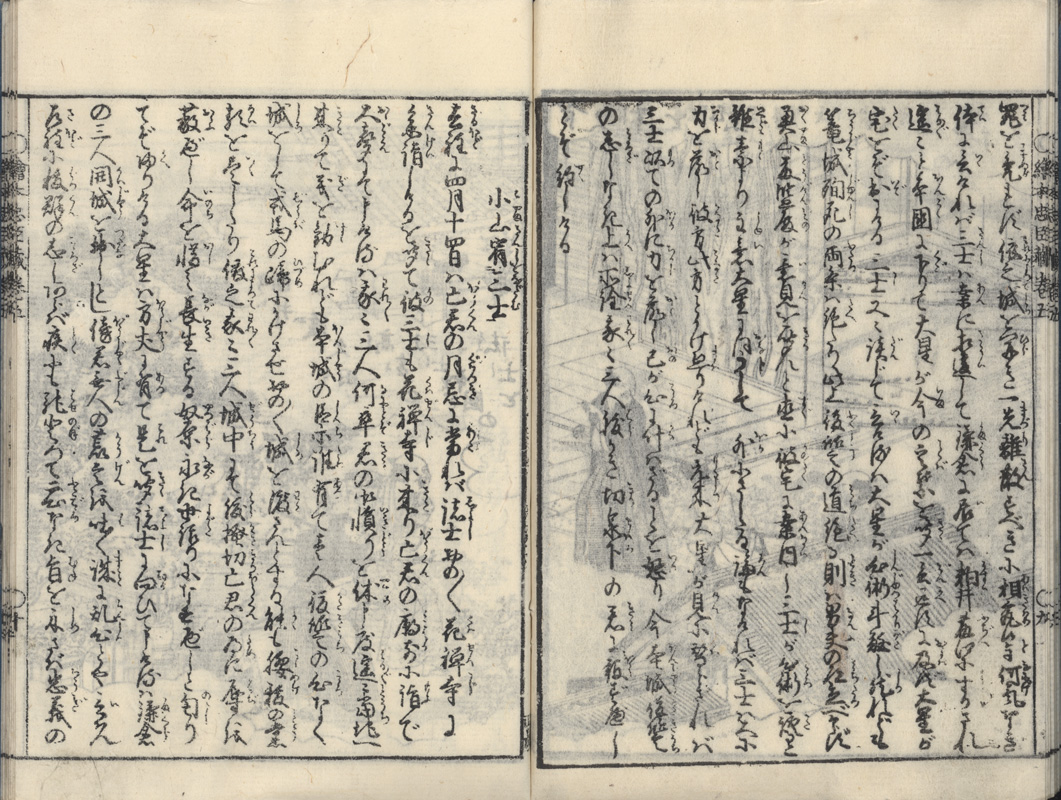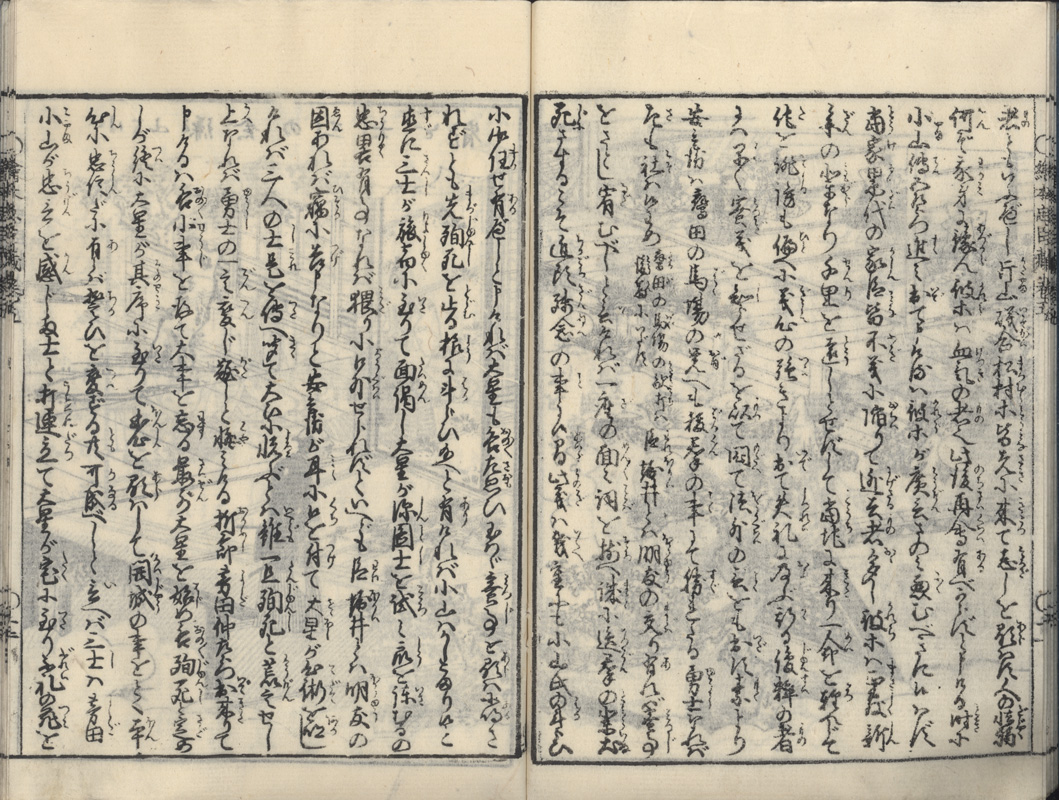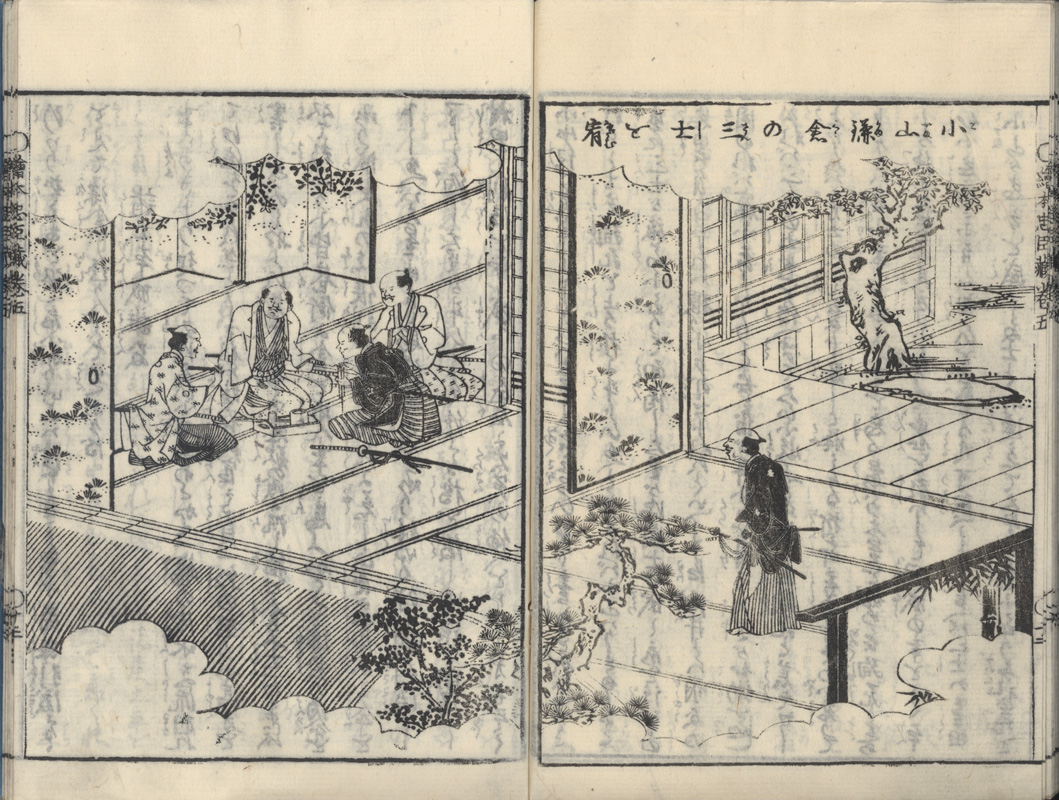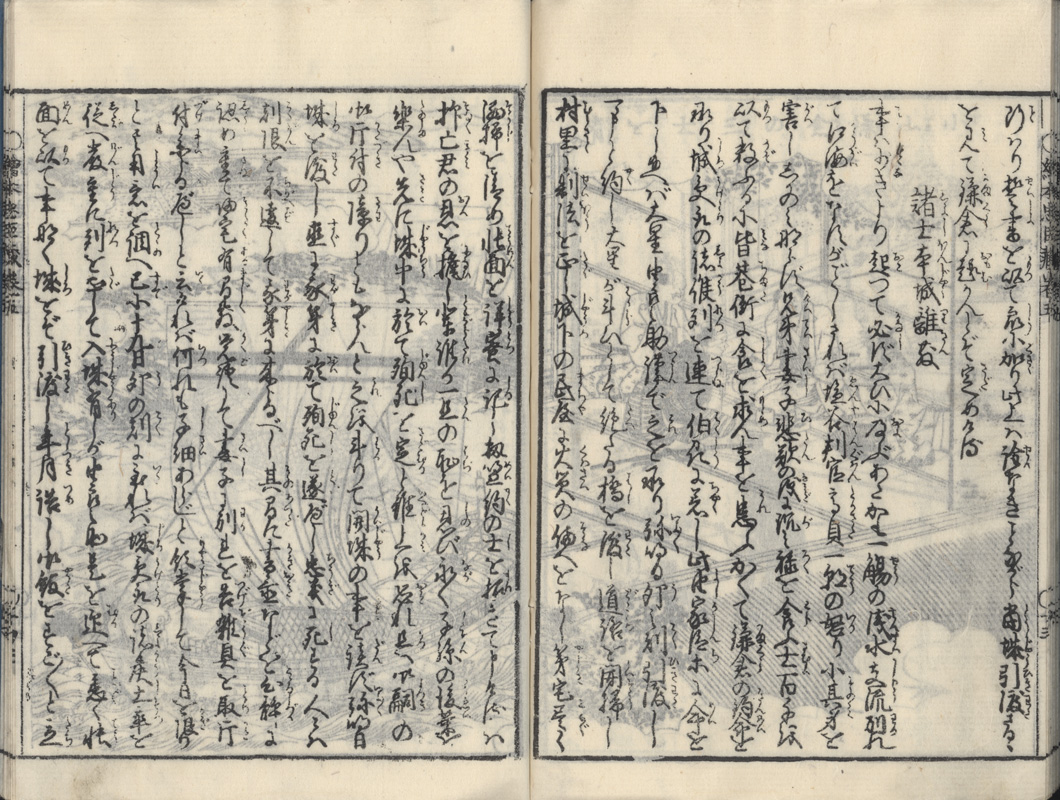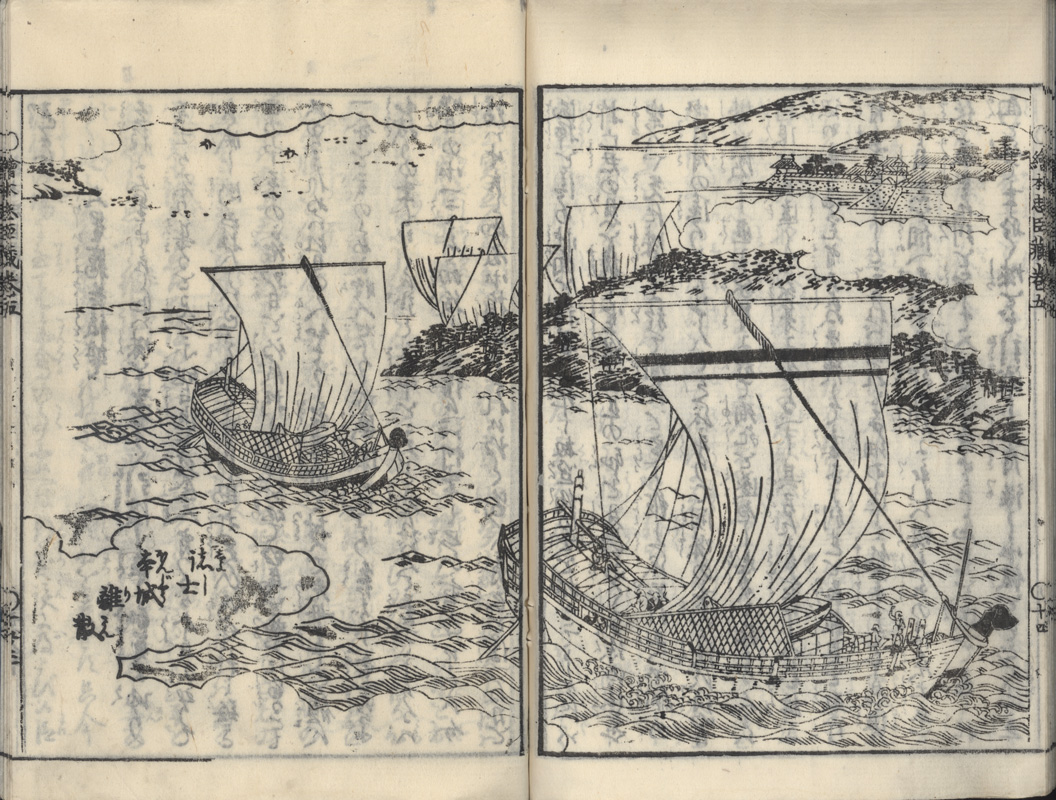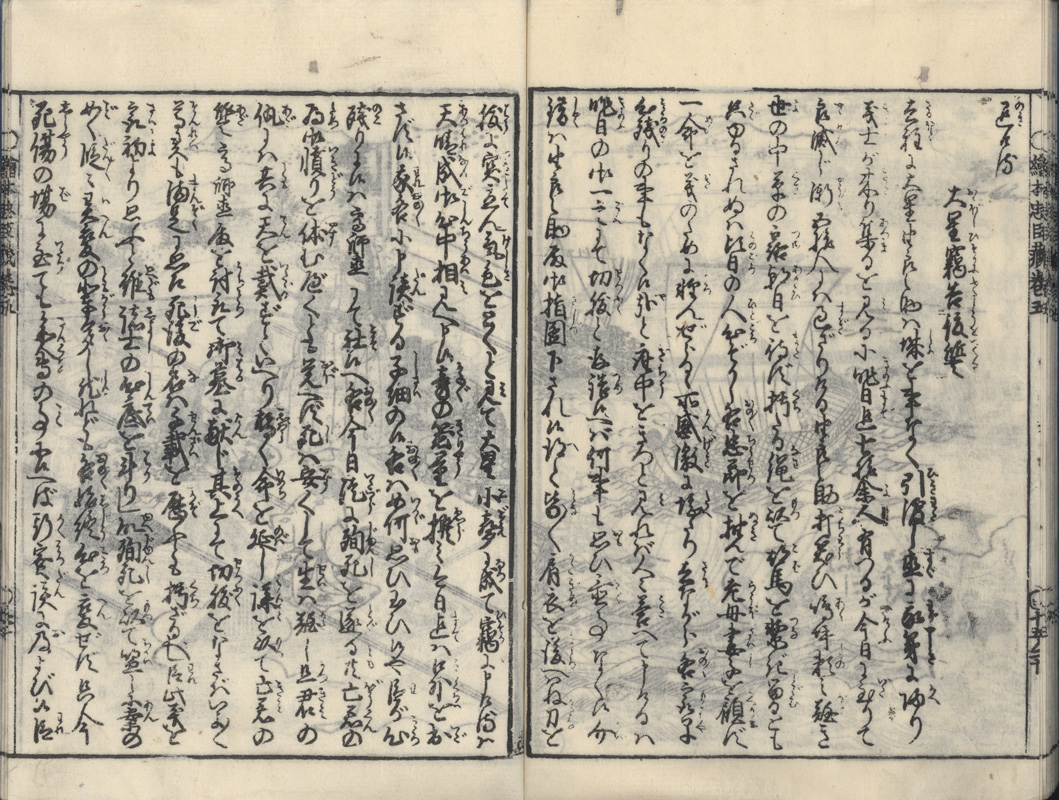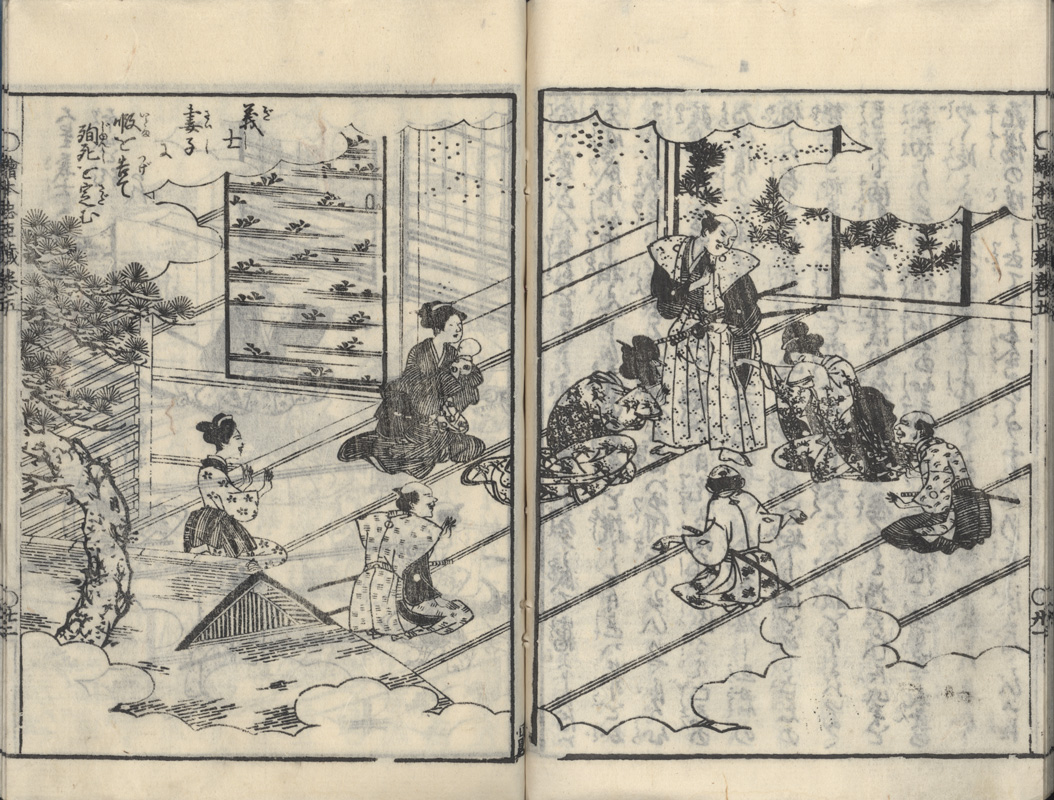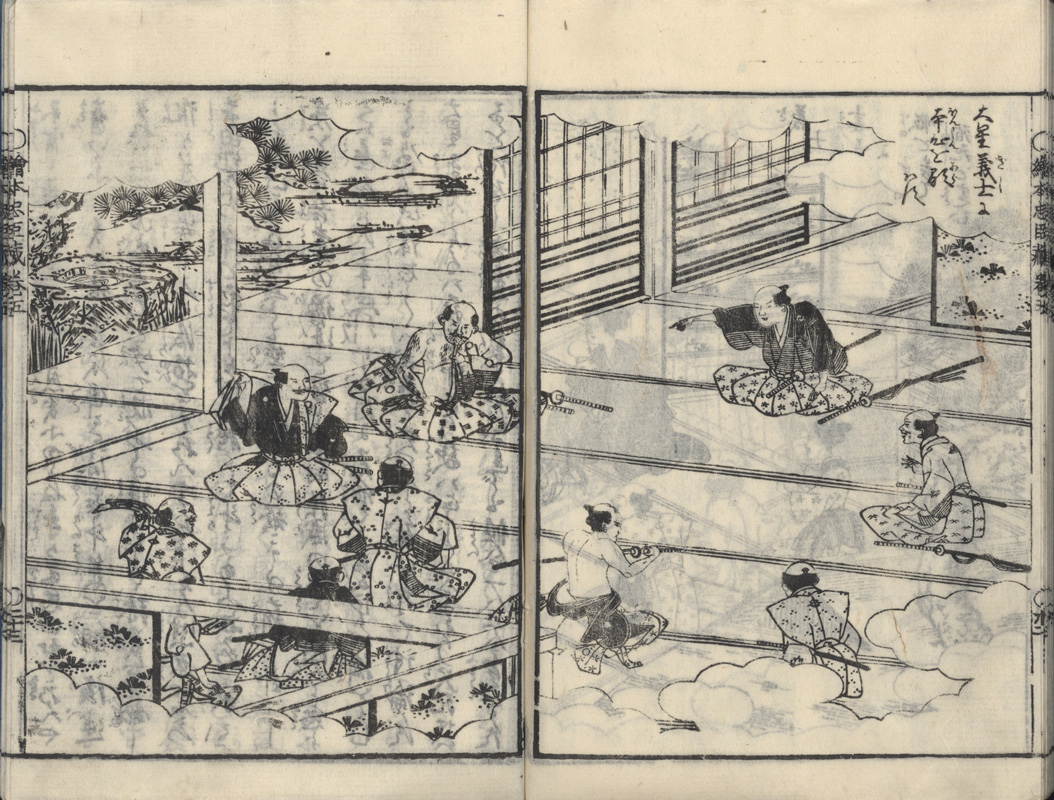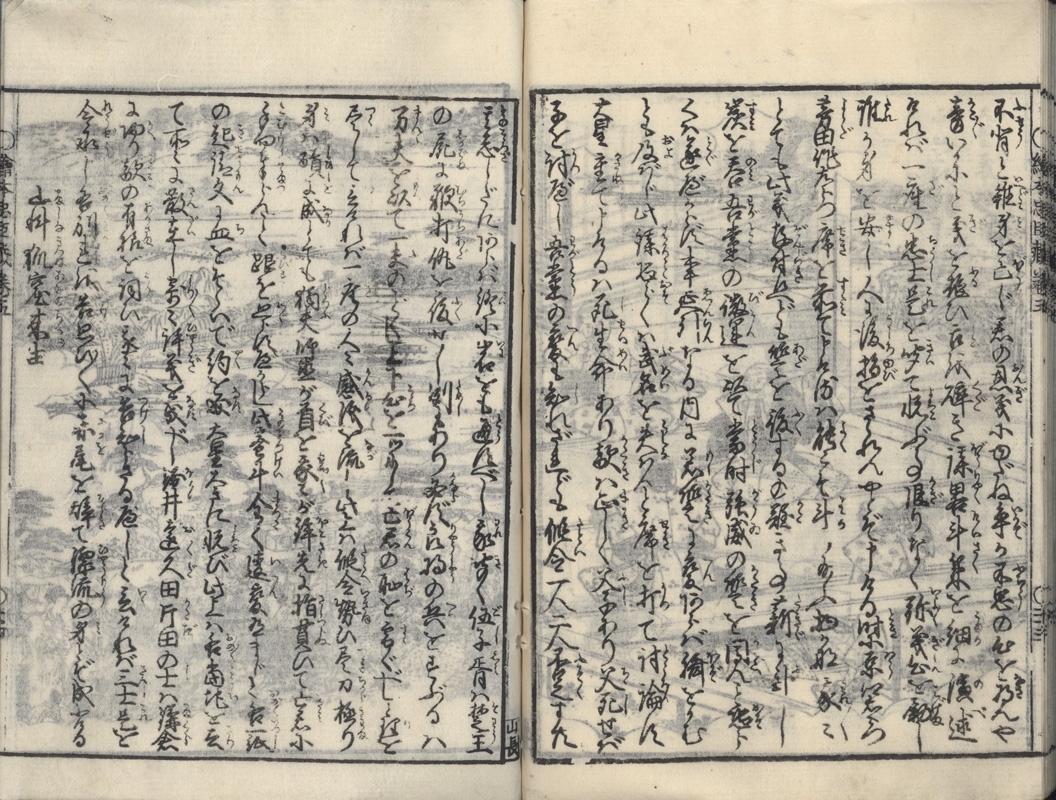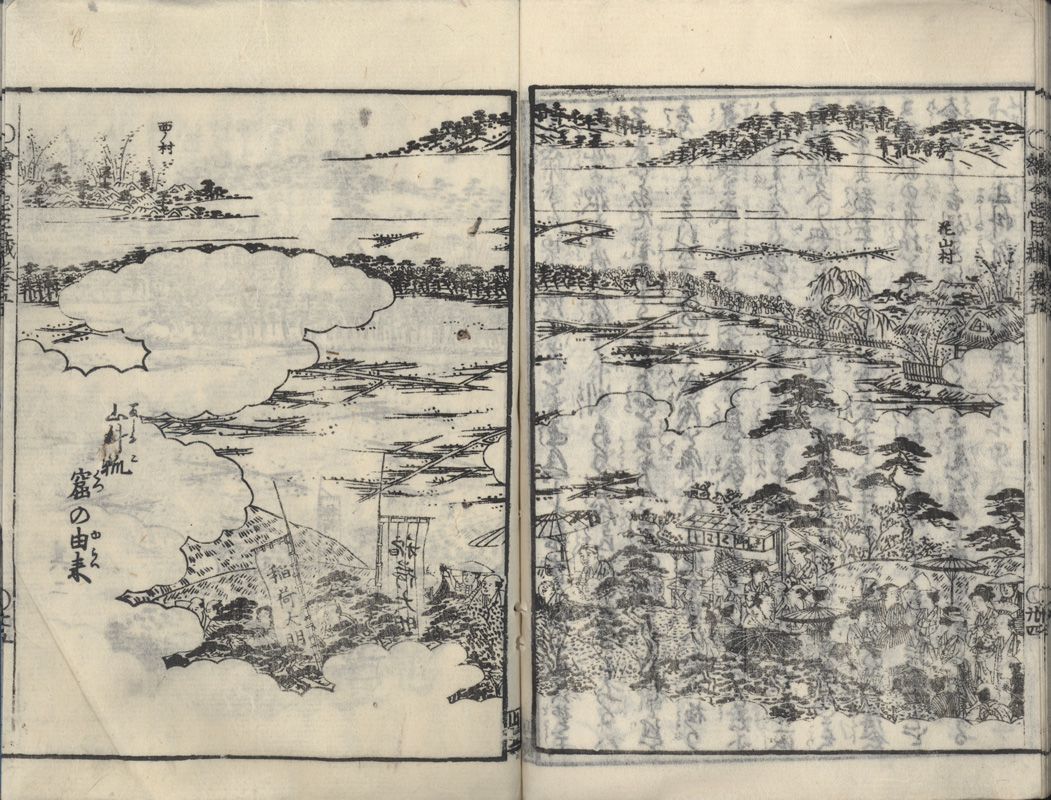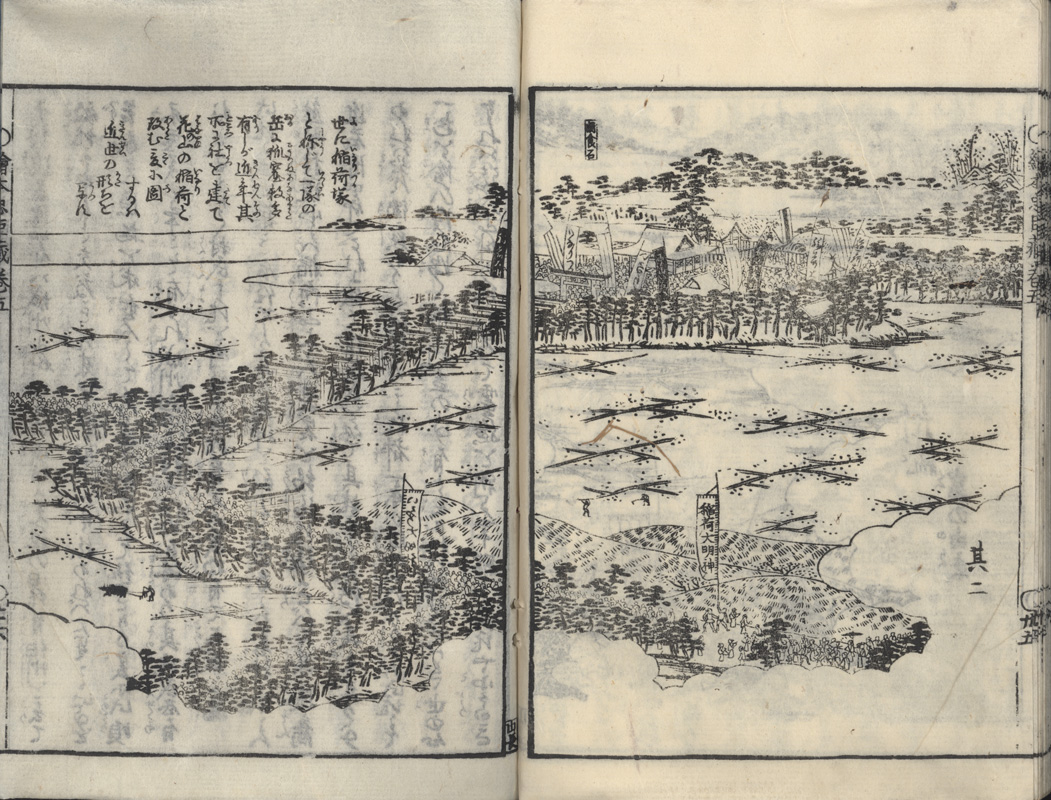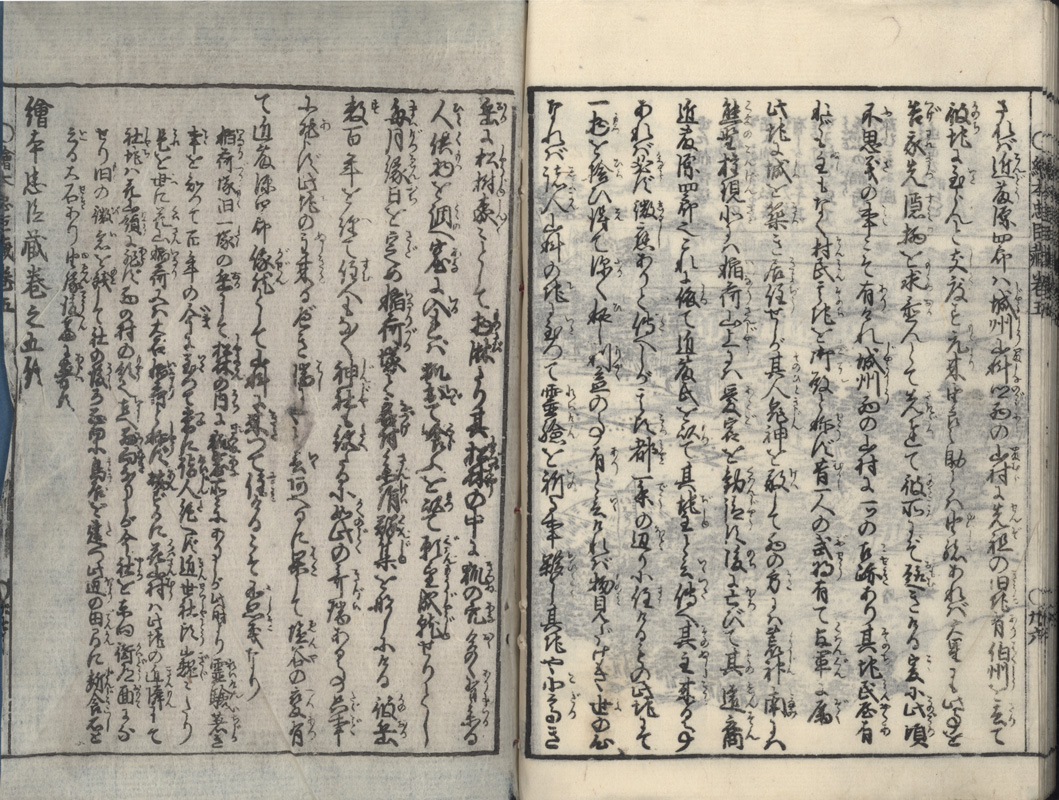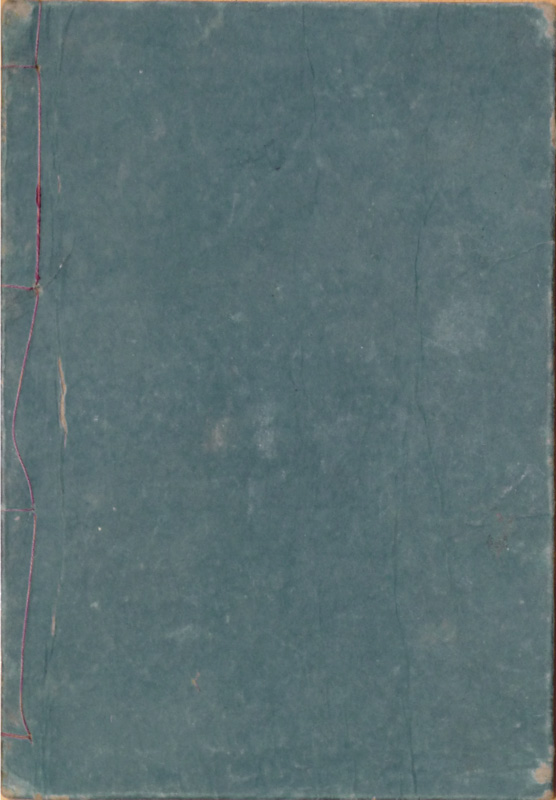About This BookVolume five of ten bound volumes comprising a novel loosely based on the real life 1701 Akō Incident (with names changed) that gave rise to the tale of Chūshingura, popularized in the kabuki theater and the written word. All ten volumes (not part of The Lavenberg Collection)
In discussing this particular work, Professor Henry D. Smith II, writes the following: | In the early nineteenth century, however, as analyzed in a recent article by Yamamoto Takashi, the sense of historical truth associated with jitsuroku [non-fiction] manuscripts began to filter into commercially printed books, in the genre known as ehon yomihon, a type of long novel created by the Kamigata publishing industry (although they circulated in Edo as well), combining texts with illustrations every several pages. Yamamoto analyzes the sources of Ehon chūshingura, written by Hayami Shungyosai and published in ten volumes in Osaka in 1800. Despite the title, it did not follow Kanadehon chūshingura but rather the general outline of jitsuroku accounts, although maintaining the theatrical tradition of altered names. Through assiduous digging and comparison, Yamamoto was able to determine that most of the subplots in Ehon chūshingura were taken from a single manuscript jitsuroku entitled Akō seigi naishidokoro (of which the earliest surviving copy is dated 1770), but with some details derived from a variety of other sources, including Katajima Shin'en's Sekijō gishinden, and, revealingly, kabuki-related publications. Yamamoto argues that the originality of Ehon chūshingura lay partly in the illustrations, which began a new lineage in the visualization of the Akō vendetta, but more importantly in the new historical consciousness that it represented. Where the manuscript version that served as its model had rambling and involved plot lines, reflecting the earlier jitsuroku tradition, the yomihon version was clearer and more coherent in narrative structure. As a genre, the story was now stabilized in print (in contrast to the jitsuroku, where each copyist felt free to add new embellishments), and made available as a legitimate reading pleasure, suitable for public contexts and with none of the underground ethos of manuscript novels. Whereas the jitsuroku versions of the Akō story were a kind of "proto- history" (zen rekishi), Ehon chūshingura, Yamamoto suggests, was truly "historical literature," and while it may not have been focused on historical "fact," it was accepted by its readers as a sort of historical "truth." In this respect, it represents a crucial new pattern in enhancing the "capacity" of Chūshingura, one that remains strong today in historical novels and in the films and television series derived from them.1 |
1 “The Capacity of Chushingura”, HENRY D. SMITH II appearing in Monumenta Nipponica Vol. 58: No. 1, Spring, 2003, p. 22-23. Note: Descriptions of the drawings are taken from the margin notes of the copy of this work held by Ritsumeikan University Art Research Center arcBK02-0063-05
cover (with missing label bearing title reading Ehon Chūshingura, Volume 5 繪本忠臣藏 之五巻) | 繪本忠臣藏 之五巻 Listing 目録 of all ten volumes | Listing 目録 of all ten volumes continued |
Impatience of Funa | | Fuwa entrusts his orphan to the care of the old priestess of the Temple of Tōmiyō |
| |
|
Three of the retainers return from Kamakura |
| and beg to be added to the loyal retainers | | They deride the other retainers |
| Koyama receives them into his home |
|
| The retainers leave the castle and disperse | | The royal retainers take leave of their wives and children and devote themselves to vengeance
|
| Yuranosuke exhorts his companions to be true to themselves | |
|
The story of the foxhole at Yamashima (place of Yuranosuke's retirement) |
|
Rear cover
|
Print Details| IHL Catalog | #2188 | | Title or Description | Ehon Chūshingura, Volume 5 繪本忠臣藏 之五巻
| Artist
| Hayami Shungyōsai (1767-1823) | Signature
| 速水春曉齋画圖 Hayami Shungyōsai ga zu [printed at the end of Volume 10] | | Seal |
| | Publication Date | 寛政十二 Kansei 12 1800 | | Edition | likely first
| | Publisher | Yoshinoya Jinbei 吉野屋仁兵衛 | | Carver |
| | Printer | | | Impression | excellent | | Colors | n/a | | Condition | good - front cover is missing the title slip
| | Miscellaneous |
| | Genre | ehon 絵本 | | Format | fukurotoji
| | H x W Paper | 8 11/16 x 6 1/16 in. (22.1 x 15.4 cm)
| | H x W Image | | | Collections This Book | Waseda University Library Call No. 文庫05 00702; Ritsumeikan University Art Research Center arcBK02-0063-05; Library of Congress Call No. PL799.H39 E43 1800 Japan Cage | | Reference Literature |
|
|
